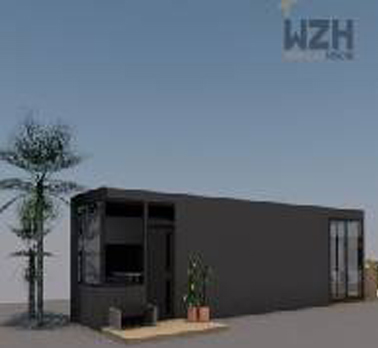Container homes have gained popularity for their sustainability and unique design. If you're considering purchasing a container home, it's crucial to make informed decisions to ensure a smooth and satisfying experience. Here are essential tips to guide you through the process of buying a container home.
Familiarize yourself with local building codes and regulations regarding container homes. Ensure that your chosen location allows for the construction and placement of container structures. Some areas may have specific restrictions or requirements that you need to consider.
Thoroughly inspect the condition of the shipping container. Look for signs of rust, structural damage, or any modifications that might affect its integrity. A well-maintained container ensures a solid foundation for your home and minimizes potential issues in the future.
Containers can become extremely hot or cold depending on the climate. Ensure the container is properly insulated to regulate temperature and consider ventilation options to create a comfortable living environment. Proper insulation also contributes to energy efficiency and reduces utility costs.
Modern Looking Modular House Coffee Shop
Before purchasing, have a clear plan for the layout and design of your container home. Consider the number of rooms, placement of windows and doors, and any additional features you desire. Planning ahead helps streamline the construction process and ensures your container home meets your specific needs.
While container homes offer cost savings compared to traditional construction, budget for necessary modifications. Expenses may include insulation, interior finishes, plumbing, and electrical work. Having a realistic budget ensures that you can transform the container into a comfortable and functional living space.
Engage a contractor experienced in container home construction. Their expertise can be invaluable in navigating the unique challenges associated with container modifications. A professional ensures that the construction meets safety standards and local regulations.
If you're interested in a sense of community, research container home communities in your area. Joining an existing community or collaborating with like-minded individuals can provide support, shared resources, and a sense of belonging in your container home journey.
A: Yes, it is possible to stack shipping containers to create multi-story homes. However, structural considerations and local building codes must be carefully adhered to for safety and compliance.
A: Container homes are considered eco-friendly as they repurpose shipping containers, reducing the demand for new construction materials. Additionally, they can be designed to incorporate sustainable features such as solar panels and rainwater harvesting systems.
A: While container homes are movable, they are not as easily transported as traditional mobile homes. Moving a container home requires specialized equipment and planning. It's advisable to choose a location with a long-term commitment in mind.
By following these tips, you'll be well-equipped to navigate the process of buying a container home. Whether you're seeking an eco-friendly dwelling or a unique living space, careful consideration and planning will lead to a container home that meets your expectations.
If you’re interested in using container homes for any of your projects, please do get in touch and we’d be happy to talk you through your options.
 How Does RFID And Other Internet Of Things Technologies Empower Bicycles To Become Intelligent?
According to the NFC hotel card manufacturer, for fitness enthusiasts, bicycles are an excellent way to exercise.
How Does RFID And Other Internet Of Things Technologies Empower Bicycles To Become Intelligent?
According to the NFC hotel card manufacturer, for fitness enthusiasts, bicycles are an excellent way to exercise.
Aug. 14

WEIZHENGHENG Modular House Technology CO.,LTD provides various configurations of Flat Pack container houses. It can meet the needs of home living.
Copyright © Hebei Weizhengheng Modular House Technology Co., Ltd. All Rights Reserved |Sitemap